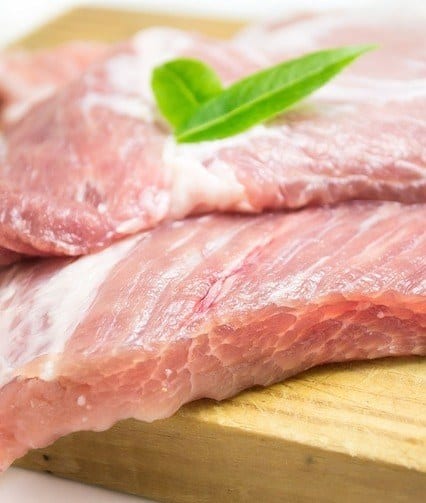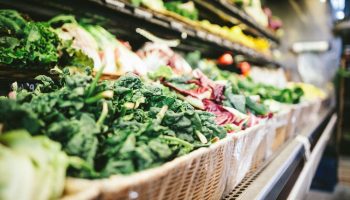Wondering if you really need to buy organic meat while on the Whole30 diet?
You’ll find a hefty markup on grass-fed, organic, and pastured meat at the grocery store, but there’s a reason why they are Whole30 preferred and generally recommended for healthy eating.
CAFO (Concentrated Animal Feeding Operation) meat comes from factory farming, and while the living conditions for the animals are horrific enough alone to encourage alternative meat sources, there are health reasons as well.
Healthy Meat is Healthier For You
Factory-raised animals are fed a disgusting, unnatural diet, sometime including manure, chicken feathers, plastic, and even city garbage. That, plus loads of antibiotics to prevent the farm animals from getting sick amidst their deplorable conditions.
What does this means for the humans who eat them? Increased risks of e-coli for one thing. Humans can also end up ingesting considerable amounts of arsenic from meat, which is often fed to chickens and pigs to improve the color of meat (it’s safe for them, but not for us).
If you want to learn more about the pros of grass-fed organic meat, I’d suggest checking out Paleo Leap’s discussion of the issue. They go remarkably in-depth and explain point by point why grass-fed is best.
Organic, grass-fed meat is healthier and tastes a ton better. However, it can be pricey and if it’s not a feasible financial option for you, don’t sweat it. You’ll still get plenty of benefits from the Whole30 diet, even with regular meat.
If we can suggest one thing though – go ahead and spend a bit more for organic eggs for those Whole30 breakfast recipes. Pastured eggs have a better fatty avid profile, more micronutrients, and are usually only a couple more bucks then the usual eggs.





This article is totally bogus. Please educate yourself from a real farmer. I grew up on a CAFO and we never fed the items listed above. The barns were temperature controlled and at least on our farm, they did not spend their entire life in a crate. When they were in the farrowing house (birthing and nursing babies), the sow (mama) and her litter (family of piglets) were in crates to keep the sows from laying on them and keep the litters together. Just like humans, some sows are better mothers than others so by keeping the litters together, we could better observe which mothers were doing a good job and which ones needed more attention. Pigs were treated if they were sick but all those treatments have withdrawal periods and animals who have been treated are not allowed to be sold until the withdrawal period is over. I could go on and on but I won’t. Please, I beg you, know your facts about family CAFOs before you slander any more operations.
Sheila, I’m so glad to hear there are farmers like yourself, but unfortunately, you’re the exception, not the norm.
LifeHealthHQ, how many farms have you been on? I’m a proponent of organic meat, but I also grew up in a farming family in a rural area surrounded by hundreds of farms. Not once did I see the above. I’m not denying this exist, I’m sure it does. But I believe what is described in the article is the exception, rather than the norm.